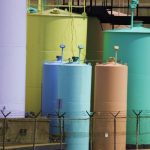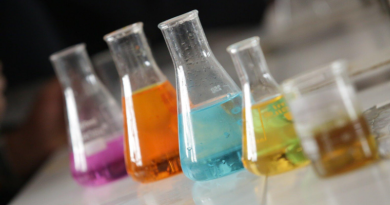Low Cold Storage and How it’s Affected the COVID-19 Supply Chain
Several over-the-counter drugs and prescriptions can store standard room temperature conditions. These drugs still require humidity control and a stable temperature for storage, but they have a long standard shelf life.
Many pharmaceuticals, such as numerous COVID-19 vaccines, need specific extremely low-temperature ranges when stored. The reasons can vary from complex mixtures destabilizing at room temperature to biological material being chemically fragile or even large molecules that will not hold together outside of exact storage conditions. Whatever the reason, they all lead to either a sped-up degradation or total product deactivation.
Table of Contents
What is Cold Storage?
Cold storage for pharmaceuticals is often defined using a few general categories of lower-temperature storage methods. These low-temperature storage methods have labels that range from refrigerated to ultra-cold.
Refrigerated is the most common range to store pharmaceutical products. These temperatures land anywhere between 2 to 8 °C (36 to 48°F). However, even lower temperatures increasingly require newly developed pharmaceuticals.
Ultra-cold is an exceptional circumstance for fragile pharmaceuticals that need close attention and extreme temperatures to stay stable for transport and storage. These temperatures range from -50°C (-58°F) and below. This storage method is becoming more critical in the pharmaceutical world each year as more complex and advanced drugs and treatments require ultra-cold conditions to be stored and transported.
One of the most critical pharmaceuticals stored in this range is the recently developed COVID-19 vaccine. This unique storage method is necessary to ensure that the COVID-19 vaccine remains stable during transport. The vaccine will become ineffective and unusable if kept out of these conditions for too long.
Cold storage is vital for the COVID-19 supply chain. Let’s examine why the COVID-19 vaccines require these storage conditions and how this impacts global supply chains.
COVID-19 and the Cold Storage Supply Chain
Vaccine development is a rapidly advancing field with new and expanded methods with consistent validation with all vaccines produced. mRNA-based COVID-19 vaccines are no different and have led to the creation of new approaches in the ways that vaccines are stored and delivered.
A clear example of why cold storage is necessary for the COVID-19 vaccine supply chain is the Pfizer-BioNTech vaccine, which needs storage conditions as low as -90° to stay stable. As a result, the vaccine demanded the development of specially designed containers and temperature monitors to store and maintain these often fragile pharmaceuticals.
These unique storage methods for the vaccines are not solidified as of yet, either. Therefore, collecting additional data on COVID-19 vaccines and other similar ultra-low cold storage treatments changes the specific guidelines. These vaccines need low temperatures more extreme than most treatments shipped out in the massive volumes the COVID-19 vaccines require is unexpected to change.
Challenges faced by Ultra-Low Temperature Storage
According to Dickson Data, cold storage for pharmaceuticals requires a particular focus on data tracking to ensure that all systems are operational. Another issue the supply chain faces is the limited amount of storage some areas have compared to the number of treatments they need. For example, California has a limited capacity for ultra-low temperature pharmaceuticals in its public health facilities.
Rural America is another area that faces severe issues with gathering and maintaining these COVID-19 vaccines at an optimal temperature. According to Business Insider, several of the difficulties involved simply getting the vaccines to these remote locations. When the vaccines arrive, there is also the issue of storage in areas often not equipped with ultra-low temperature storage.
Unfortunately, slowly addressed solutions address these challenges. However, better equipment and standards of cold storage are leading to increased amounts of ultra-low temperature storage available in the region. According to the Wall Street Journal, several strides have initiated the advancement of the technology used in maintaining cold temperatures for all types of pharmaceuticals.
Improvements in COVID-19 Vaccine Storage
With all the challenges of ultra-low temperature storage in specific locations and along the supply chain, countless improvements receive initiation. These changes comprise two ideals: making storage accessible and the vaccines more stable.
Drug research in all fields is rapidly advancing and is seeing general improvements in many different domains. However, in no small part, thanks to the technology used in these methods constantly increasing side-by-side.
Improvements will follow as the pharmaceutical drug and treatment industry modernizes and is noticeable with IT shaping the transportation and storage of pharmaceuticals. While the treatments are getting more sensitive, the available methods to handle them are also becoming more precise to keep up with them.
COVID-19 Cold Storage Alternatives
While the increasing availability of ultra-low temperature cold storage has far-reaching effects on the entire pharmaceutical industry, it doesn’t reach everywhere. Rural areas with small populations and few primary health care centers still face several challenges handling pharmaceuticals with such precise needs. For example, in some regions, the Pfizer-BioNTech vaccine won’t be able to be held long enough with available storage methods to be reliable.
Other vaccine options exist that these smaller regions are more equipped to handle. For example, the Moderna COVID-19 vaccine has a storage range of -20°C. It still requires exceptional storage methods, but this is well out of the range of ultra-low temperature storage.
The vaccine can remain stable at -2°C to -8°C for 30 days but only holds at room temperature for 12 hours. However, for rural areas, this still makes Moderna a far more accessible option for administering and storing vaccines in the short and long term.
Other vaccines produced are likely not to need ultra-low temperature storage either. However, the earliest products do often present the most significant challenges when it comes to transportation. As more research and development begin to create alternatives, the issue of rural transport will likely continue to diminish.
When these new vaccines hit the supply chain, the need for ultra-low temperature storage methods will decrease but not vanish. Therefore, more complex compositions that require these extreme environments will continue in the pharmaceutical industry. Also, storing one of the most widely distributed COVID-19 vaccines will still need ultra-low temperatures easily met by regions already equipped to handle them.












